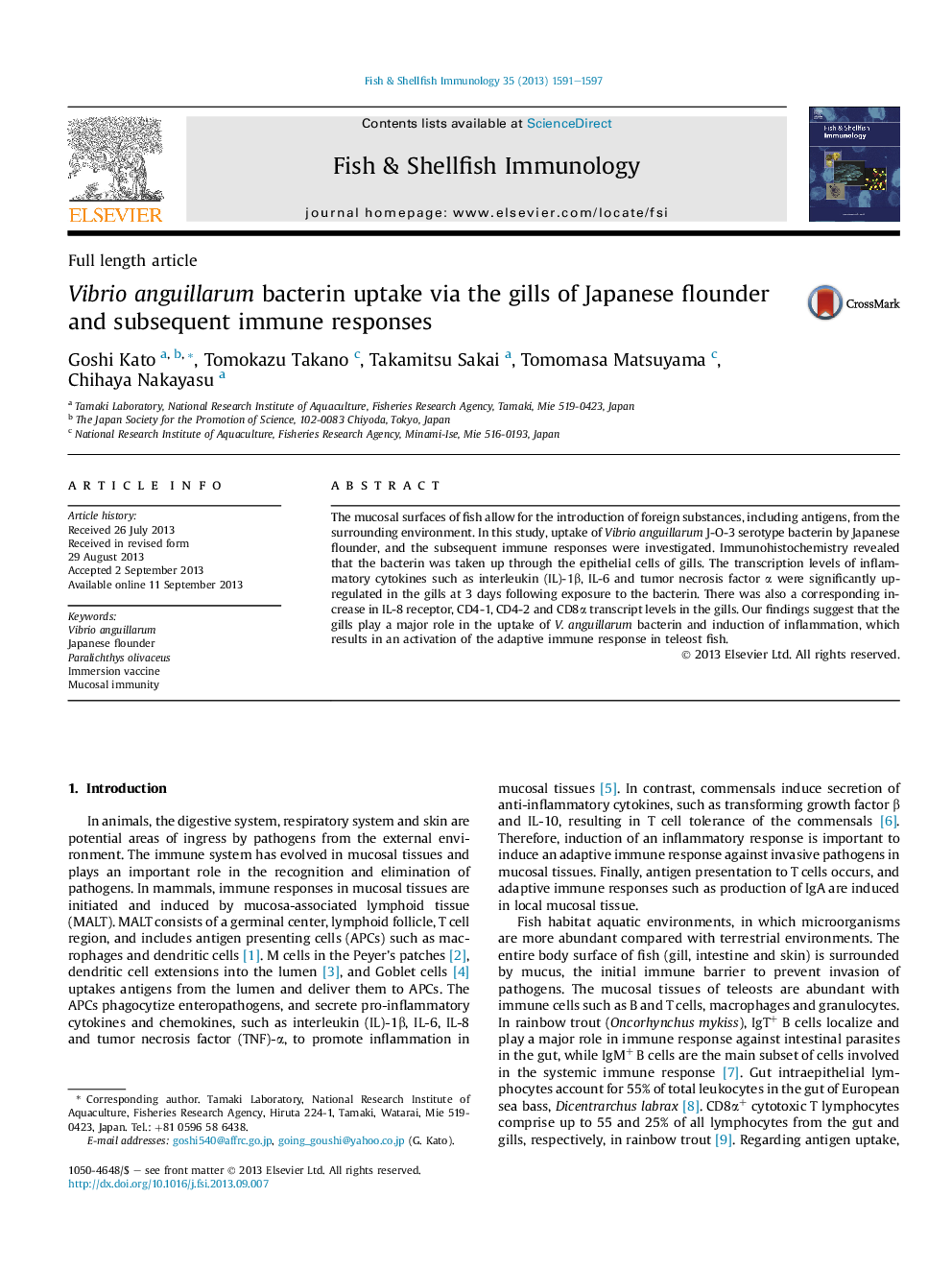| Article ID | Journal | Published Year | Pages | File Type |
|---|---|---|---|---|
| 2431730 | Fish & Shellfish Immunology | 2013 | 7 Pages |
•Vibrio anguillarum bacterin was administrated to Japanese flounder by immersion.•Immunohistochemistry showed that the bacterin was taken up by the gill epithelium.•IL-1β, IL-6, TNFα and IL-8R mRNA increased only in the gills after immersion.•Serum antibody titer against the bacteria was increased after immersion.•Gill has a main role for uptake and recognition of the bacterin after immersion.
The mucosal surfaces of fish allow for the introduction of foreign substances, including antigens, from the surrounding environment. In this study, uptake of Vibrio anguillarum J-O-3 serotype bacterin by Japanese flounder, and the subsequent immune responses were investigated. Immunohistochemistry revealed that the bacterin was taken up through the epithelial cells of gills. The transcription levels of inflammatory cytokines such as interleukin (IL)-1β, IL-6 and tumor necrosis factor α were significantly up-regulated in the gills at 3 days following exposure to the bacterin. There was also a corresponding increase in IL-8 receptor, CD4-1, CD4-2 and CD8α transcript levels in the gills. Our findings suggest that the gills play a major role in the uptake of V. anguillarum bacterin and induction of inflammation, which results in an activation of the adaptive immune response in teleost fish.
